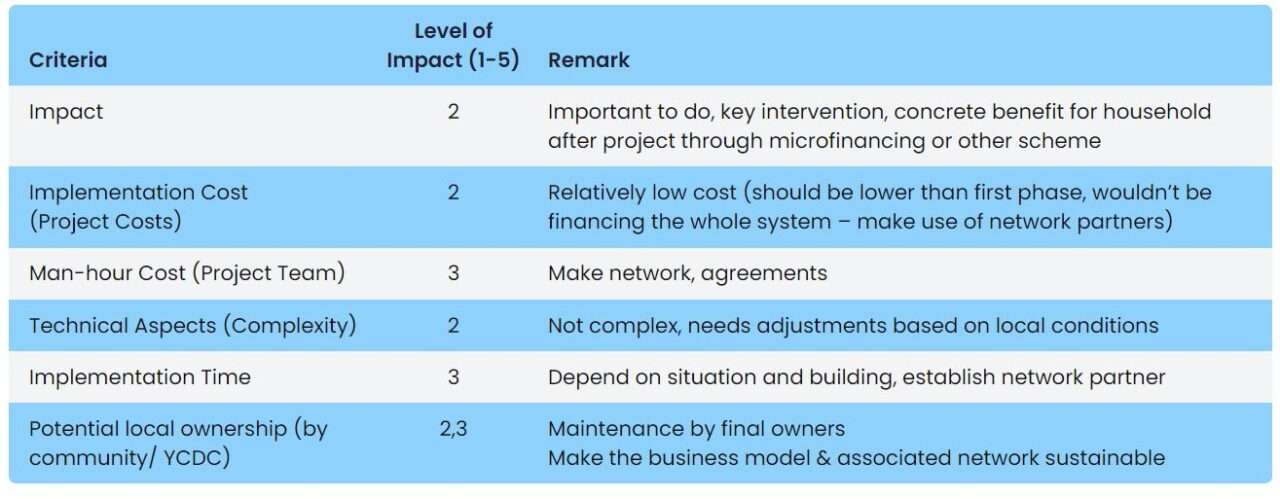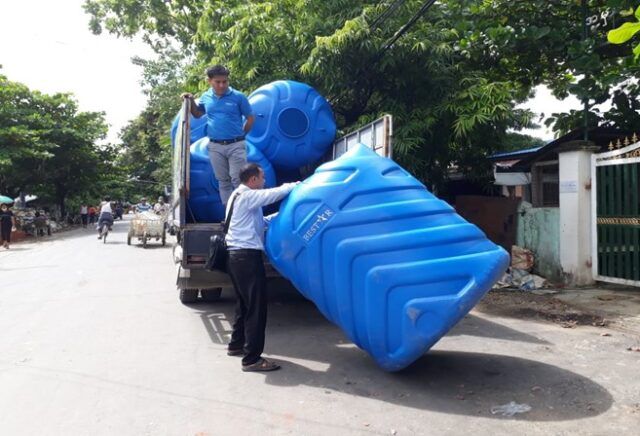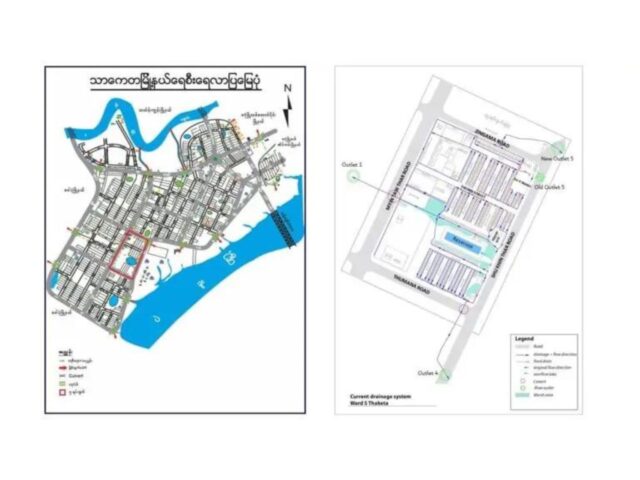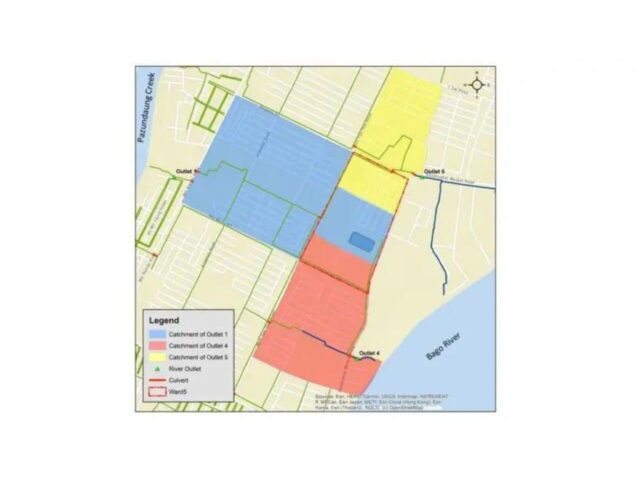The main objective of this intervention is to scale up the individual RWH system through a business model (microfinancing or other schemes), to be more resilient to water scarcity and climate change.
How does it work?
In the pilot phase, the individual rainwater harvesting systems were designed and constructed by the project team. However, there was a lot of interest from other households to also obtain a system for their house, but most people do not have the capacity to properly design and build such a system for their own house. The design and construction of individual rainwater harvesting systems could thus be offered as a service, combined with appropriate consumer finance solutions and with additional finance obtained from donors. This will accelerate the uptake of the systems and thus increase the impact on both flood risk reduction and household water needs.
For the upscaling of business models, suitable financing schemes, and community funding mechanisms for RWH systems are required.
Impact/Relation to Climate Resilience/Adaptation
The impacts are the same with the Rainwater Harvesting intervention (Find out more information here.) and these impacts increase when the amount of RWH systems increases.
The two main impacts are:
- access to a cheap and good quality water source
- decrease flooding (rainwater collected instead of flowing directly in the drainage system).
It also contributes to all the benefits of:
- reliable water supply
- affordable
- good water quality
- less groundwater depletion
- quick solution – interim solution before pipeline will be connected to all households
Multi-Criteria Analysis for Expanding Rainwater Harvesting System

| Criteria | Level of Impact (1-5) | Remark |
|---|---|---|
| Impact | 2 | Important to do, key intervention, concrete benefit for household after project through microfinancing or other scheme |
| Implementation Cost (Project Costs) |
2 | Relatively low cost (should be lower than first phase, wouldn’t be financing the whole system – make use of network partners) |
| Man-hour Cost (Project Team) | 3 | Make network, agreements |
| Technical Aspects (Complexity) | 2 | Not complex, needs adjustments based on local conditions |
| Implementation Time | 3 | Depend on situation and building, establish network partner |
| Potential local ownership (by community/ YCDC) | 2,3 | Maintenance by final owners Make the business model & associated network sustainable |





